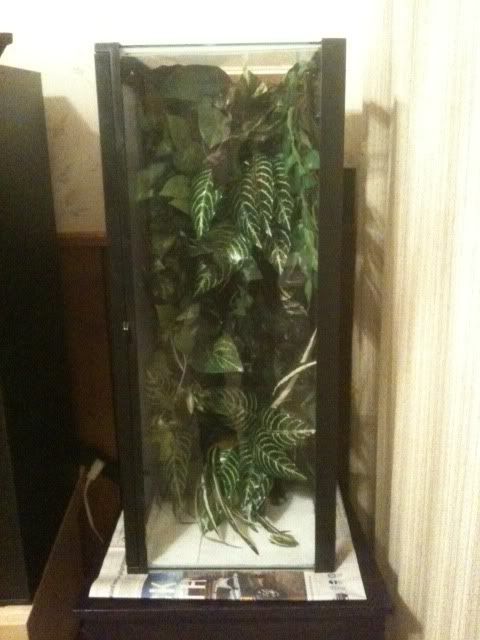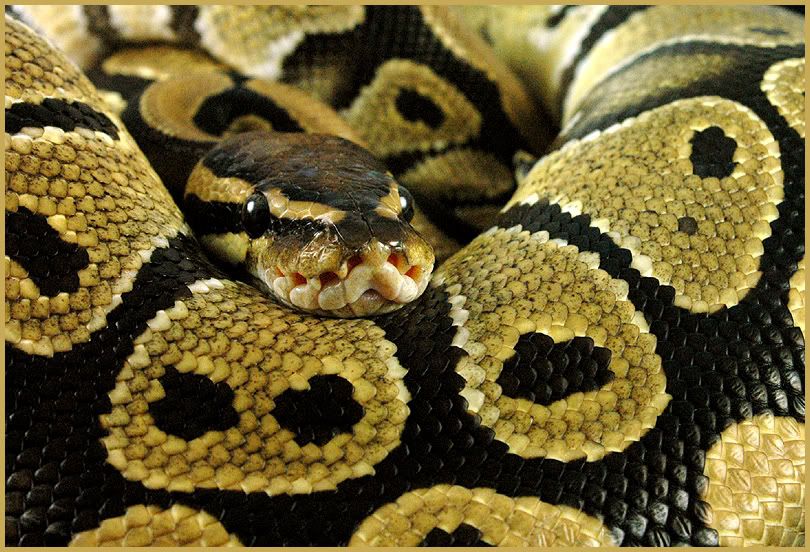You will need:
-Your tank
-A pen of sorts for marking (I had a sharpie lying around so I used that)
-Strong scissors/wire cutters
-Hot glue gun&extra glue sticks
-Fake plants (I got mine from Michael's Arts&Crafts - it is important when selecting your plants that you make sure there are no sharp edges or little pieces that they could pull off&hurt themselves.)
-Contact Paper Cork Board (You can find several different brands, available in different places - I don't remember where I got mine, it might have been Orchard Supply Hardware. Here's a link to some that they have on amazon.com: http://www.amazon.com/Tact-04F-C6421-06-18-Inch-4-Feet-Adhesive/dp/B000WEPD6U/ref=sr_1_2?ie=UTF8&s=home-garden&qid=1301162045&sr=8-2
-Optional, Strongly Suggested: A good sense of humor
All the supplies, put together (oooh... ahhh... a visual aid...):
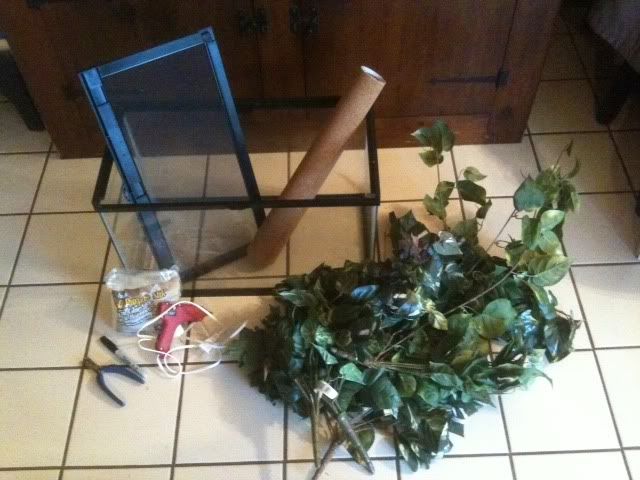
Pick the side that you want to decorate, and measure it out on the cork board. I'm working with scraps that I had left over, and managed to have just enough to cover that back wall of a 10 gal that I wanted to decorate. Draw your lines, then cut.
Personal recommendation: I like to cut the cork a little bit smaller than the dimensions of the side I'm putting it on, so that I know it will fit, and it gives me a little leeway with the plants and letting them stick over the edges. (For example, if the side was 18x24, I might cut the cork at 16x22)
Measure, draw, cut:
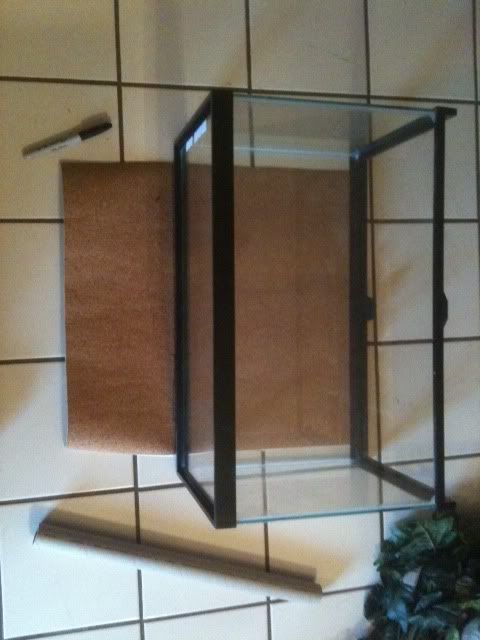
Plug in that hot glue gun, grab your fake plants, and start decorating!
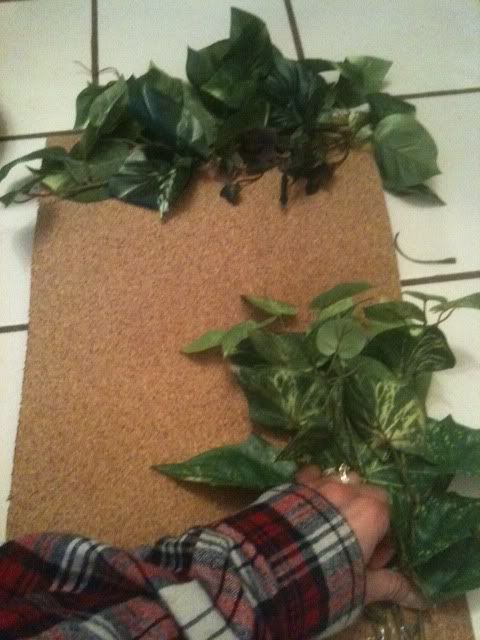
A couple 'rule of thumbs' that I like to keep in mind:
-With my geckos, "If it's not nailed down, they're going to tear it up." My critters /love/ these backgrounds, and it shows.
-Fabric is easier to glue than plastic. I always make sure to anchor the plants down by the 'stem', and then additionally by gluing a couple of the leaves to the cork as well.
-When in doubt, add more glue. It doesn't always have to be to the cork board - sometimes I'll glue one leaf to another well anchored leaf.
I like to rotate it a little, make sure I get a different view as I'm gluing stuff down, and 'over fill' the background a little - that's my own personal preference.
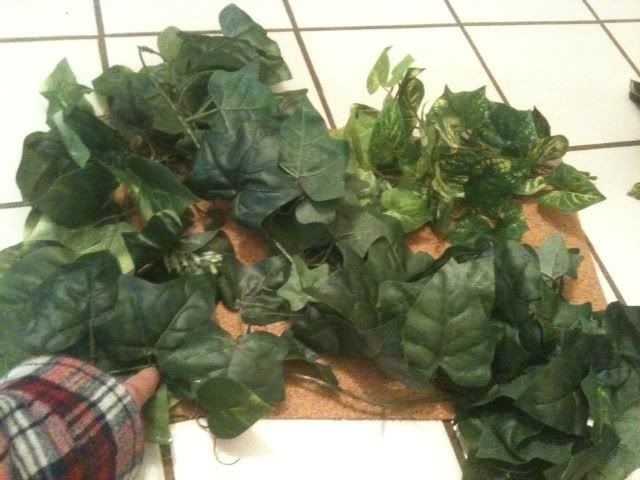
When I think the background looks full enough, or I'm done burning my fingers on the glue gun (which, for a ten gallon, takes about an hour), it looks something like this:
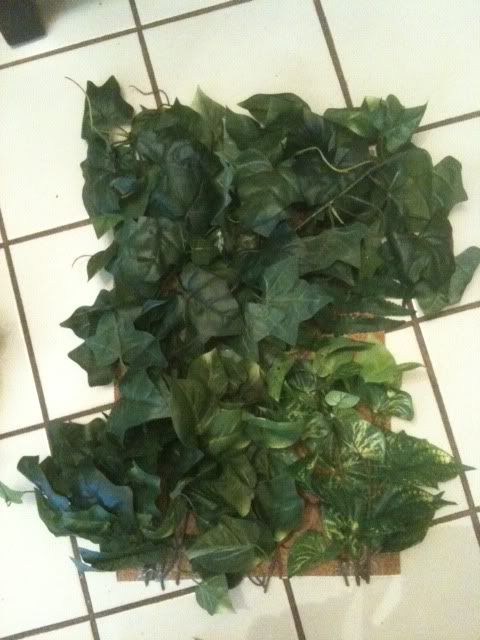
Turn it over, peel off the paper...
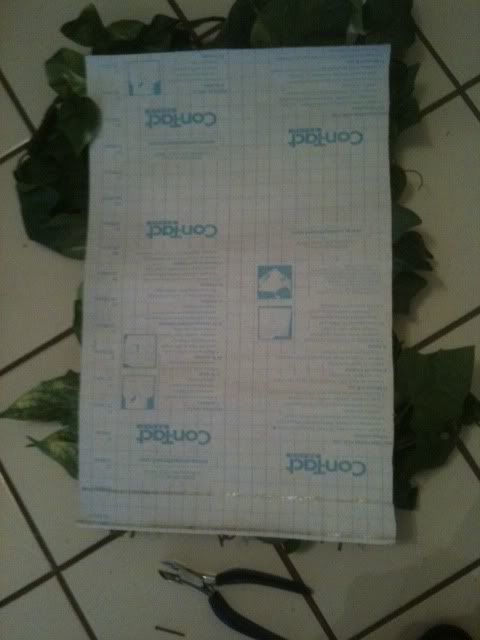
And press it onto the inside of the tank. Make sure to be very thorough, so that it adheres fully - I like to start from the center and work out, which helps to eliminate any air bubbles that might have gotten caught between the paper and the backing.
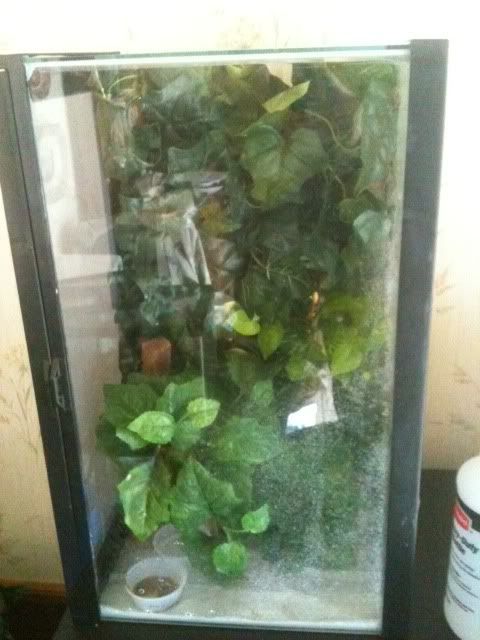
They're quick, easy, and hold up well to both the geckos and the humidity.
Hope this is helpful! :D
A gratuitous shot of the 20 L I did about 4 months ago:
